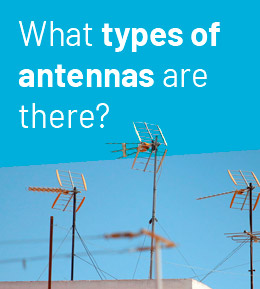Installing an antenna in a community requires a number of important technical knowledge and considerations. Below are some key points you should be aware of
Contents
Local regulations
You should check local regulations and laws before installing an antenna in a community. You may need to obtain permits and comply with certain safety regulations or siting restrictions. Check with your local authorities to make sure you meet all requirements.

Steps to obtain full regulatory information for your location
- Identify the relevant jurisdiction: Antenna installation regulations may vary depending on the jurisdiction, which may be municipal, state or federal. Identify the appropriate jurisdiction for your community.
- Research online: Most jurisdictions have websites that provide information on antenna regulations. Search online for the website for the jurisdiction you identified and review the information available.
- Check with the authorities: If you cannot find information online or if you need clarification, you can check directly with the relevant authorities. You can look up the contact phone number or email address on the jurisdiction’s website and request information on antenna regulations.
- Hire a professional: If you are unsure how to proceed or if the regulations are complex, you can hire a professional who has experience in installing antennas. A professional will be able to help you understand the regulations and carry out an installation that complies with all legal requirements.
It is important to note that antenna regulations can vary from jurisdiction to jurisdiction. Therefore, it is essential that you check the regulations pertaining to your particular community.
Aspects to take into account when choosing the location of your community antenna:
- Height: The antenna should be located in an elevated location to receive an adequate signal. Therefore, look for a location as high as possible.
- Clear: The antenna should have a clear line of sight to the satellite or transmitting station. Therefore, look for a location that is clear of obstacles such as trees, buildings or other structures.
- Accessibility: The antenna must be accessible for maintenance and repair. Therefore, select a location that is easy to access and work with.
- Distance: The antenna should be located as close as possible to the devices that will receive the signal to minimise signal loss. Therefore, look for a location that is close to the devices that will receive the signal.
- Safety: The antenna should be installed securely to prevent it from being dropped or damaged due to weather conditions. Therefore, look for a secure and stable location for the antenna.
- Antenna type: There are different types of antennas, such as directional and omnidirectional antennas. The choice of antenna type depends on the purpose of the installation and the distance of the signal you expect to receive. It is important to choose an antenna that is compatible with the devices that will receive the signal.
- Cabling: Cabling is crucial for the antenna installation. It must be of high quality and designed to withstand weather conditions. It is important to follow the manufacturer’s instructions for wiring installation.
Different kinds of community antennas

There are different types of antennas, such as directional and omnidirectional antennas. The choice of antenna type depends on the purpose of the installation and the distance of the signal expected to be received. It is important to choose an antenna that is compatible with the devices that will receive the signal.
List of common antenna types:
- “Yagi” type antenna: This is a directional antenna and is used to transmit and receive signals in one direction only. It is commonly used in television and radio.
- Parabolic antenna: This is a satellite antenna that is used to receive signals from satellites in space. It has a dish shape and is able to concentrate the received radio waves on a single point on its surface.
- Omnidirectional antenna: An antenna that emits and receives signals in all directions. It is commonly used for mobile communication systems, such as cellular towers.
- Panel antenna: An antenna that has a flat, rectangular shape. It is commonly used in wireless networks and for short distance communications.
- Roof antenna: An antenna that is mounted on the roof of a building. It can be of different types, such as omnidirectional or directional, and is commonly used for receiving television signals.
Quality cabling for community antenna installation
The choice of the right cabling for the installation of a community antenna will depend on the type of antenna, the frequency of the signal and the distance between the antenna and the receiving devices.
Most common types of cables used in the installation of antennas:
- Coaxial: This is one of the most common cables used for antenna installation. It consists of a central conductor surrounded by a metallic shield and an insulating sheath. It is capable of transmitting high frequency signals and is used in most cable television and satellite installations.
- Fibre optic cable: A cable that uses light to transmit signals instead of electricity. It is capable of transmitting signals over long distances without loss of signal quality and is used in some cable TV antenna installations.
- Flat cable: This is a thin cable that is commonly used in indoor TV antennas. It is easy to conceal and can provide good signal quality for short distances.
It is important to note that the selection of an antenna will depend on the specific needs of the community and local conditions. If you are unsure of what type of antenna is suitable for your community, please contact us.






